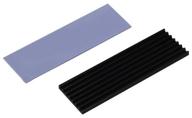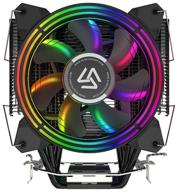
Review on Enokay Raspberry Pi Single Cooling Heat Sink by Andy Edwards

You can do much better than this fan
I received this fan today. It was in a tiny white box. What wasn't in the box was instructions. The only instructions you will receive are literally in the pictures attached to the page where you can buy this item. That's all. It is not mentioned why the 5V mode could be used instead of the 3V "silent" mode. From two feet away, with the Raspberry Pi's official case cover removed, I cannot hear this fan running. I can't imagine anyone outside of the library not hearing this. Now let me teach you some knowledge: YOU DON'T WANT TO USE SILENT MODE. At full power in 5V mode, there is almost no cooling. Yes, this fan fits in the official Raspberry Pi 4 case. I would like to state at this point that anyone who gives a 5-star review simply does not know what they are talking about. I connected my Raspberry Pi 4 to a LG 1080p monitor. According to the vcgencmd Measure_temp terminal command, my Raspberry Pi 4 sits on the desktop and does nothing but display the clock on the desktop at 38 degrees Celsius. Remember, children, because this is our control number. I should note that this is without a heatsink, just a clean, sealed, boned Raspberry Pi 4 case. I downloaded a 1080p, 60fps theater video from YouTube. Very quickly the temperature on the Raspberry Pi 4 rose to 64 degrees Celsius and the Raspberry Pi 4 started to slow down on its own as the video started losing frames and drops. I just unplugged the Pi and used a USB fan to blow room temperature air around the Pi to cool it down to room temperature. It's time for the radiators. I mounted all but the largest heatsinks in the locations shown in the photos uploaded by the manufacturer. I have a combo fan/heatsink attached to the processor. I applied power to the indicated GPIO pins (pins 4 and 6) and briefly turned on the Pi to make sure the fan was working. Mission accomplished. Now the fan is connected and working, I replaced the case cover and uploaded Pi.Back to YouTube. Uploaded the same video. Measured the temperature using the same time index as without the heatsink and found the temperature of the Pi. 62 degrees Celsius. Something was wrong. Unplug everything and cool down the Pi. Double check the installation and without using the quick clamp I can't think of a more reliable method to attach the fan/heatsink to the CPU. However, I removed the fan and replaced it again. All connections were tight and Pi was thrown back into the fray. This time Pi reported a temperature of 53 degrees Celsius. It's not an incredible improvement. It's certainly not what I was hoping for from the air cooling. I started thinking about official business. There really isn't much air to suck in. I figured maybe removing the case cover would help, so I did. Run the test again. The temperature is still 53 degrees Celsius. Okay, that's vomit. I disassembled the Pi again and removed the fan and heatsink combination. For the rest of my life I could not feel the air being moved by a fan. It wasn't until I wet my lips and move the fan half an inch away from my lips that I finally felt a breeze, proving the fan was moving air at all. Completely remove the fan and install the last heatsink on the processor. I dug up an old USB powered gooseneck fan that I sometimes used to cool my USB ASIC bitcoin miners. An incredible amount of wind comes off this thing, but that would be an improvement - it should be - as I could actually feel the air being pushed out of it without being within half an inch of it. Test again. With lid. To remove the case, have all the heatsinks in place and set the fan to around 75% power was the temperature reported by the Pi. 38 degree's. Yes, that's the same temperature the Pi previously reported idling without a heatsink. The difference now was that the PI was under full load and running 1080p 60fps video with no stuttering, re-buffering or crashes. TL version; DR: This "fan" barely cools the PI - definitely not to the degree that 5-star reviews call for. Regular heatsinks with an external fan that is NOT like this will make your Pi look as cool as a cucumber.
- Good product for the price
- weak













